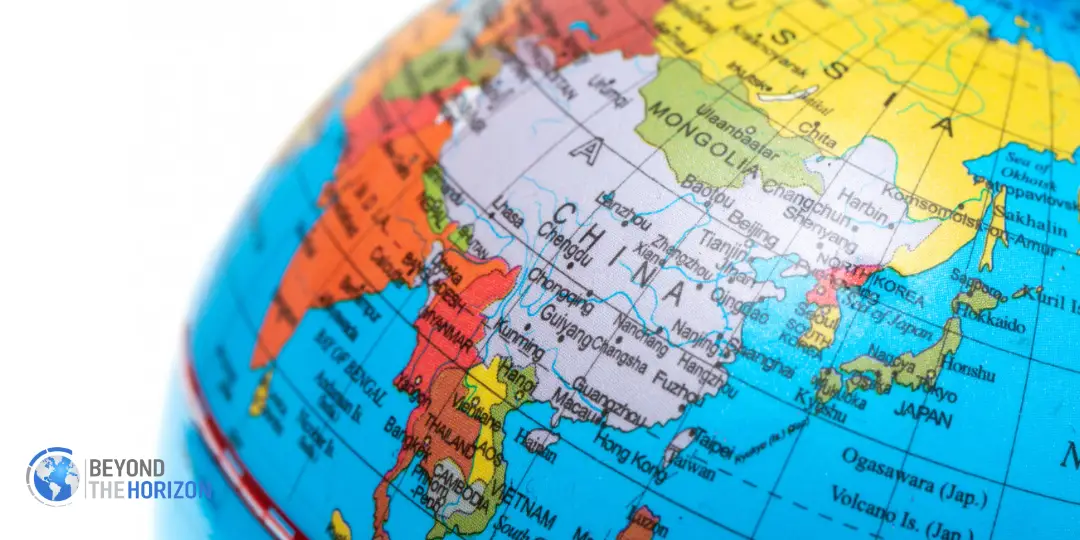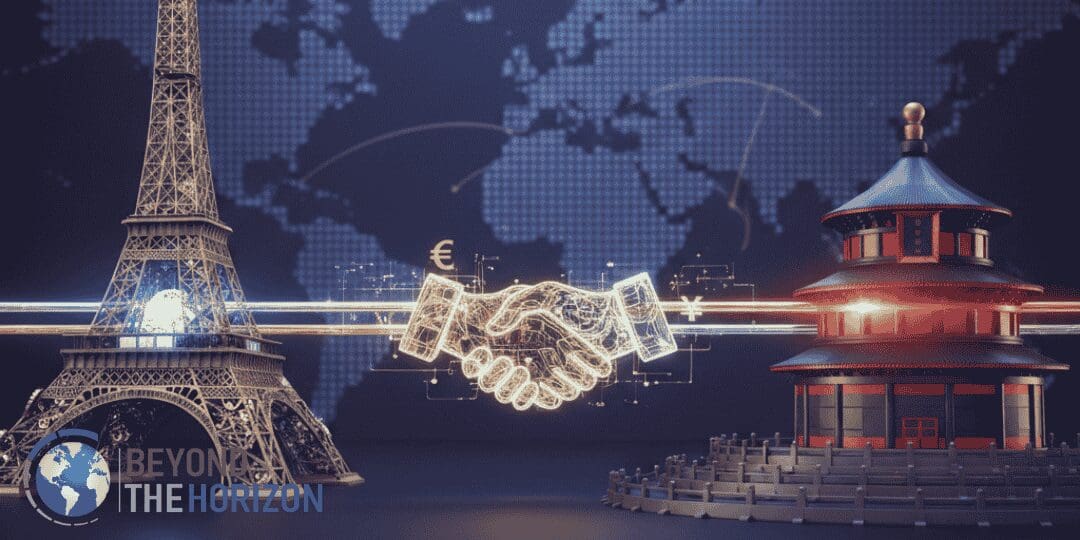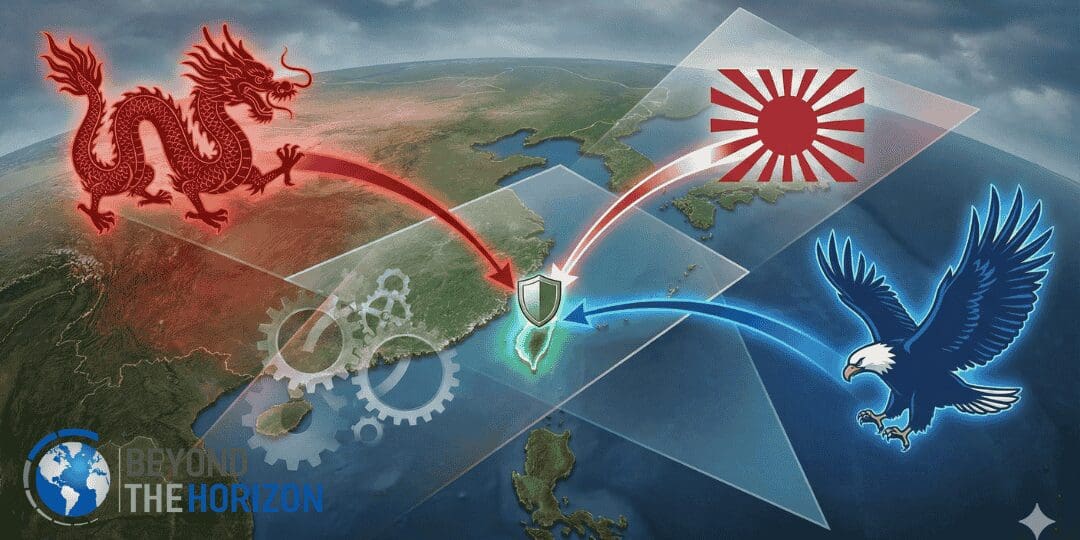Key Takeaways
- A New Strategic Triangle: Since 2022, China, Russia, and North Korea have intensified coordination across political, military, and economic domains, forming a de facto anti-Western alignment—though without formal alliance structures.
- Russia–North Korea Axis Solidifies: Moscow’s dependence on Pyongyang for munitions and manpower during the Ukraine war culminated in the June 2024 Comprehensive Strategic Partnership Treaty, which includes a mutual defense clause unprecedented since the Cold War.
- China’s Balancing Act: Beijing remains the pivotal but cautious actor—supporting Moscow diplomatically and economically while avoiding entrapment in Russia’s war or North Korea’s provocations. Its strategy emphasizes deniable cooperation rather than formalized commitments.
- Expanded Military Cooperation: Joint exercises among the three states have surged, with Russia and China conducting aerial patrols near U.S. allies and North Korea sending troops and artillery shells to Russia—marking its first overseas deployment in decades.
- Economic Lifelines and Sanctions Evasion: China and Russia provide North Korea with energy, food, and technology, while developing alternative payment systems to bypass Western sanctions. Chinese firms’ dual-use exports and Russia’s discounted energy trade underpin this network.
- Motivations and Constraints:
- Russia seeks resources, diplomatic cover, and markets to offset sanctions but risks overreliance on China.
- North Korea gains food, fuel, and military technology but faces exposure, casualties, and potential alienation from China.
- China benefits strategically from U.S. distraction but remains wary of formal entanglements and secondary sanctions.
- Regional and Global Implications: The trilateral momentum challenges the U.S.-led alliance system, weakens UN sanctions, and accelerates regional militarization. Yet internal mistrust, economic asymmetry, and divergent priorities constrain deeper institutionalization.
- Policy Outlook: Sustained trilateral coordination will likely persist as long as the Ukraine conflict endures. Effective Western responses require calibrated sanctions enforcement, strengthened allied defense integration, and careful diplomatic engagement with Beijing to limit escalation.
Introduction
Since Russia’s full‑scale invasion of Ukraine in February 2022, the geopolitical landscape in Eurasia and the Indo‑Pacific has shifted rapidly. The war provoked unprecedented Western sanctions against Moscow and intensified U.S. efforts to strengthen alliances in East Asia. In response, Russia intensified diplomatic and military cooperation with the People’s Republic of China (PRC) and the Democratic People’s Republic of Korea (DPRK), deepening a triangle of coordination that some analysts call an “axis of autocracies.” China and Russia already declared a “no limits” partnership before the war, while North Korea had long depended on China for trade and on Russia for political cover at the United Nations. The Ukraine war created new incentives: Russia needs weapons, North Korea needs food, energy and high‑technology, and China benefits from a distraction of U.S. resources and a coalition that can oppose Western‑led institutions.
This essay examines the trilateral momentum between China, Russia and North Korea and it reviews political, military and economic cooperation, assesses the motivations and constraints of each actor, and analyses the implications for global and regional security. Particular attention is paid to major summits and agreements, joint military activities, arms and energy cooperation, and sanctions‑evading strategies.
Political Alignment and Diplomatic Summits
Russia–North Korea rapprochement
The war in Ukraine revitalised a previously dormant Russia–North Korea partnership. According to Chatham House, North Korea offered rhetorical support for Russia’s invasion and recognised Russia’s proxy regimes in Donetsk and Luhansk. Russia reciprocated by vetoing or diluting UN sanctions and providing diplomatic cover. Russian isolation and the depletion of its ammunition stocks created incentives to source artillery shells and missiles from Pyongyang. In return, Moscow offered food aid, energy and advanced military technology; the relationship evolved from a transactional exchange to a strategic alignment built on ideological opposition to the West. High‑level visits underscored this momentum: Foreign Ministers Sergey Lavrov and Choe Son‑hui exchanged visits in 2023, and Kim Jong‑un visited the Vostochny Cosmodrome in Russia’s Far East in September 2023, reportedly discussing satellites and ballistic missiles.
The most striking political development was the Comprehensive Strategic Partnership Treaty signed in Pyongyang on 19 June 2024 during Vladimir Putin’s first trip to North Korea in 24 years. The treaty includes a mutual defence clause (Article 4) obligating each side to “take measures without delay” if the other faces aggression; unlike the Soviet‑era treaty that expired in 1995, the new pact is indefinite. Russian and North Korean media framed it as a friendship or partnership, not an alliance, but the substance marks the most robust legal commitment since the Cold War.
China’s cautious role
China maintains formal ties with both Russia and North Korea but has avoided endorsing a three‑way alliance. Beijing and Moscow proclaimed a “no limits” partnership on 4 February 2022, pledging cooperation in foreign policy, trade and technology. Yet Chinese officials stress their non‑alliance principle: they avoid formal military alliances to preserve autonomy and reduce entrapment risks. According to the Lowy Institute, the absence of a formal trilateral summit is not evidence of weakness but rather a feature of Beijing’s approach; by orchestrating high‑profile events without labels (e.g., showing Xi Jinping, Putin and Kim Jong‑un together at parades), China signals anti‑Western alignment while maintaining deniability. Chinese leaders ensure they remain the pivotal actor and avoid being dragged into North Korea’s risky behaviour.
Nevertheless, Beijing’s diplomacy has shifted subtly. After the Ukraine invasion, China abstained on UN resolutions critical of Russia and joined Moscow in preventing the renewal of the UN Panel of Experts that monitors North Korean sanctions. Chinese officials participated in joint ceremonies, such as the Victory Day parade in Moscow on 9 May 2025, where Chinese and North Korean troops marched alongside Russian forces. Beijing’s presence signalled solidarity with Russia while stoking questions about an emerging axis. At the same time, Chinese leaders emphasised dialogue with South Korea and the United States, reflecting their desire to maintain stability on the Korean Peninsula and avoid excessive entanglement.
Lack of formal trilateral summits
Despite increasing cooperation, there has been no official summit of all three leaders. South Korean intelligence suggested Russia proposed a trilateral naval exercise in 2023, but none occurred. The only quasi‑trilateral event occurred during Russia’s Ocean‑2024 naval exercise when North Korea observed as a Russian ally and China participated separately. Analysts argue that Beijing prefers functional cooperation without institutionalising an alliance; this allows each state to pursue national interests while aligning against Western dominance.
Military Cooperation and Symbolism
Joint exercises and demonstrations
A surge in joint exercises underscores expanding military ties among the three states. A CSIS analysis of CRINK (China, Russia, Iran, North Korea) cooperation notes that between 2003 and 2021 there were around 61 joint exercises. After the Ukraine war, the pace accelerated dramatically: from 2022 to August 2025, CRINK militaries conducted 35 exercises. China and Russia dominate these drills and are involved in every recorded exercise; Iran joined some, and North Korea, which normally eschews such activities, observed Russia’s Ocean‑2024 naval drills while China participated directly. These exercises showcase coordination without reaching NATO‑level interoperability; they involve primarily coordination of command structures, signals intelligence and joint patrols.
Beyond CRINK, China and Russia conducted joint aerial patrols over the Sea of Japan and the East China Sea in May 2022 coinciding with a QUAD summit, sending a warning to U.S. allies. Another joint patrol in July 2024 penetrated Alaska’s Air Defense Identification Zone, signifying a willingness to expand operations into the U.S. homeland. These flights test allied responses and signal a readiness to coordinate militarily against perceived Western encirclement.
North Korea’s troop deployment to Russia
The most dramatic military development has been North Korea’s dispatch of soldiers to Russia. U.S. officials confirmed in October 2024 that Pyongyang sent at least 3,000 troops to support Russian operations, and subsequent reports suggest more than 12,000 North Korean soldiers were fighting in Russia’s Kursk region by early 2025. Ukraine claimed that over 3,000 North Korean soldiers had been killed or injured by January 2025. North Korean forces reportedly operate as artillery, engineer and support units in Russian rear areas; they obtain combat experience and help Russia fill manpower gaps.
Pyongyang gains tangible rewards: Russia supplies oil and refined petroleum, estimated at over 165,000 barrels in March 2024 alone; it also delivers food, industrial goods and possibly missile and satellite technology. The troop deployment thus demonstrates not only symbolic solidarity but also an exchange of resources and technology.
Arms transfers and military technology cooperation
North Korea has become a key supplier of munitions to Russia. CSIS notes that by December 2023, Pyongyang had sent around 5,000 containers of weapons—equivalent to 2.3 million rounds of 152 mm shells or 400,000 122 mm shells—and at least fifty ballistic missiles. The transfers were observed at the Tumangang–Khasan border crossing, where satellite imagery showed increased rail traffic carrying ore cars and tank cars that could transport coal and oil. A November 2022 transfer provided arms to Russia’s Wagner Group through the same route. After Kim’s September 2023 meeting with Putin, North Korea launched a military reconnaissance satellite in November 2023 using Russian expertise, suggesting technology transfers in exchange for arms. In October 2024, North Korea escalated by sending ballistic missiles that Russia fired against Ukrainian cities.
China’s military role
China has not openly supplied weapons to Russia but has provided dual‑use items and components. The CSIS report notes that Chinese firms, often via shell companies, have delivered semiconductors, ball bearings, machine tools and drones to Russia. Chinese trade with Russia reached a record USD 240 billion in 2023, and shipments of dual‑use goods increased 47 percent compared with 2022. This assistance enables Russia to mitigate Western sanctions and maintain war production. On the military cooperation front, China and Russia continue joint exercises and patrols, reflecting deepening strategic trust.
Economic and Energy Cooperation
Trade flows and asymmetry
Economically, the trilateral axis remains asymmetric. China is the largest partner for both Russia and North Korea. In 2023 Sino‑Russian trade reached USD 240 billion; China accounts for around 32 percent of Russia’s total trade, while Russia constitutes only about 5 percent of China’s trade. North Korea’s trade is minuscule by comparison: more than 98 percent of its official trade is with China. The DPRK depends on Chinese imports of grain, fuel and manufactured goods to survive, especially after COVID‑19 border closures devastated its economy. Russia also plays a growing role: it forgave 90 percent of North Korea’s Soviet‑era debt and is building a road bridge connecting Tumangang (DPRK) to Khasan (Russia) slated for completion in 2026.
Integration of payment systems
To bypass Western sanctions, China and Russia established regional clearing platforms for cross‑border payments of “sensitive goods.” Russian banks, cut off from SWIFT, turned to Chinese payment systems such as UnionPay and SPFS. Meanwhile, Chinese banks have become more cautious; the Wilson Center reports that by February 2024 three of China’s four largest banks curtailed transactions with sanctioned Russian institutions due to secondary sanctions pressures. Nonetheless, smaller banks and private firms continue to provide financial lifelines.
Motivations and Constraints for Each Actor
Russia
Russia’s primary motivation is to secure resources for its war in Ukraine. Heavy casualties and ammunition depletion forced Moscow to seek artillery shells, rockets and drones abroad. North Korea’s stockpiles of Soviet‑calibre munitions—once considered obsolete—are now vital. Arms shipments from Pyongyang and drones from Iran help Russia sustain offensives. Russia also benefits diplomatically; by aligning with China and North Korea, it portrays the war as part of a broader struggle against Western hegemony and gains veto support at the UN. On the economic front, the partnership offers markets for Russian energy and avenues to circumvent sanctions.
Russia faces several constraints. Engaging North Korea jeopardises relations with South Korea, a former partner in energy and shipbuilding projects. The FPRI lists reputational costs, the negative legacy of the Korean War, and economic hurdles as obstacles to deeper trilateral integration. Russia must also balance its cooperation with China; overreliance could reduce its autonomy and expose it to exploitation given the asymmetry of Sino‑Russian trade. Secondary sanctions restrict Russia’s access to Chinese financing, and sending North Korean soldiers highlights Russia’s manpower shortages, potentially undermining domestic morale.
North Korea
For Pyongyang, the Ukraine war offers opportunities. By supplying artillery shells, ballistic missiles and even troops, North Korea receives food, energy and modern military technology. The partnership reduces Pyongyang’s dependence on China and provides a counterweight, enhancing Kim Jong‑un’s bargaining power. Deployment of soldiers also gives the Korean People’s Army combat experience, and arms sales net hard currency—analysts estimate Pyongyang earned about $540 million from arms sales to Russia in 2023. Moreover, Russia’s veto at the UN protects North Korea from additional sanctions and demonstrates that its nuclear program will not be easily curtailed.
Pyongyang risks entanglement. Dispatching troops to Russia exposes North Korean soldiers to casualties and may provoke domestic backlash if losses mount. Overreliance on Russian support could alienate China, its principal patron; Chinese scholars warn that North Korea’s nuclear weapons are like a “sword” over Northeast China. Integration also remains limited by infrastructure constraints—rail and road links at the border are old and capacity is low. Finally, overt alliance with Russia may foreclose future diplomatic openings with the U.S. or South Korea.
China
China stands to gain strategically. A strong Russia–North Korea axis distracts the United States and its allies, allowing Beijing to press its claims in the South China Sea and cross‑Strait area. It also contributes to the creation of a “global south” coalition that challenges Western dominance. By providing dual‑use goods, China secures access to Russian energy at discounted prices and maintains influence over Pyongyang. Participation in joint exercises and high‑level meetings demonstrates that Beijing remains the central node of the axis.
China is cautious about entrapment. A formal alliance with Russia and North Korea could compromise its non‑alliance policy and subject it to collective defence obligations. Chinese academics warn that being tied to North Korea’s nuclear brinkmanship could drag China into conflict. Beijing also faces economic constraints: its economy slowed in 2024‑2025 and capital outflows increased; major Chinese banks have curtailed transactions with Russia to avoid secondary sanctions. The European Union and United States have targeted Chinese firms assisting Russia, raising costs. Moreover, China worries that a robust Russia–North Korea axis might spur stronger U.S., South Korean and Japanese cooperation, undermining its regional strategy.
Conclusion
The trilateral momentum among China, Russia and North Korea since 2022 represents one of the most significant shifts in global geopolitics. Driven by Russia’s need for weapons and diplomatic backing, North Korea’s desire for resources and technological upgrades, and China’s strategic interest in challenging U.S. dominance, the three states have deepened cooperation across political, military and economic domains. The June 2024 Russia–North Korea treaty with its mutual defence clause, the dispatch of thousands of North Korean troops to Russia, the surge in joint exercises, and growing arms‑for‑energy deals signify a de facto axis despite the absence of formal structures.
Yet this alignment faces constraints: historical mistrust, economic asymmetry, infrastructure limits and the risk of provoking a stronger U.S.–Japan–South Korea coalition. Chinese leaders are cautious about entrapment, and Russian and North Korean reliance on each other exposes vulnerabilities. The trilateral axis’s actions have already accelerated regional rearmament, threatened non‑proliferation norms and weakened the UN sanctions regime. To address these challenges, policymakers must enforce sanctions, strengthen allied cooperation, engage China prudently and provide humanitarian safeguards. Vigilant monitoring and coordinated responses are crucial to prevent the axis from undermining the rules‑based order and to safeguard global and regional security.






